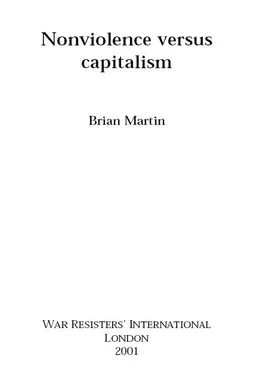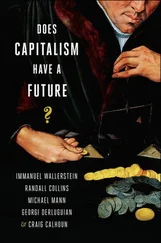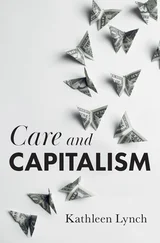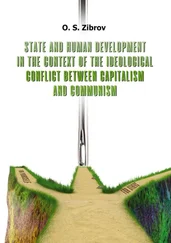Jacques Semelin, Unarmed Against Hitler: Civilian Resistance in Europe 1939-1943 (Westport, CT: Praeger, 1993).
Stephen King-Hall, Total Victory (London: Faber and Faber, 1941), appendix 3.
Hans Rothfels, The German Opposition to Hitler (London: Oswald Wolff, 1961). See also Werner Rings, Life with the Enemy: Collaboration and Resistance in Hitler’s Europe 1939-1945 (London: Weidenfeld and Nicolson, 1982).
Jacobo Timerman, Prisoner Without a Name, Cell Without a Number (New York: Vintage, 1982).
Ralph Summy, “Nonviolence and the case of the extremely ruthless opponent,” Pacifica Review, Vol. 6, No. 1, May-June 1994, pp. 1-29.
Thomas Weber, “’The marchers simply walked forward until struck down’: nonviolent suffering and conversion,” Peace & Change , Vol. 18, No. 3, 1993, pp. 267-289.
Johan Galtung, “Principles of nonviolent action: the great chain of nonviolence hypothesis,” in Nonviolence and Israel/Palestine (Honolulu: University of Hawaii Institute for Peace, 1989), pp. 13-33.
Godfrey Boyle, Peter Harper and the editors of Undercurrents (eds.), Radical Technology (London: Wildwood House, 1976); Ken Darrow and Mike Saxenian (eds.), Appropriate Technology Sourcebook: A Guide to Practical Books for Village and Small Community Technology (Stanford, CA: Volunteers in Asia, 1986); Ivan Illich, Tools for Conviviality (London: Calder & Boyars, 1973)
Johan Galtung, Peter O’Brien and Roy Preiswerk (eds.), Self-Reliance: A Strategy for Development (London: Bogle-L’Ouverture, 1980).
For an excellent treatment of the psychodynamics of killing, see Dave Grossman, On Killing: The Psychological Cost of Learning to Kill in War and Society (Boston: Little, Brown, 1995).
See especially Gene Sharp, The Politics of Nonviolent Action (Boston: Porter Sargent, 1973), pp. 7-62 and Gene Sharp, Social Power and Political Freedom (Boston: Porter Sargent, 1980), pp. 21-67 and 309-378. The following analysis is drawn from, and includes extracts from, Brian Martin, “Gene Sharp’s theory of power,” Journal of Peace Research, Vol. 26, No. 2, 1989, pp. 213-222.
Sharp, Social Power and Political Freedom, p. 22.
The term “the state” is used to refer to the system of government and government-run institutions, including the military, police, courts, government departments for taxation, welfare, education and so forth, and government-owned enterprises.
Sharp, Social Power and Political Freedom, p. 27.
Sharp, The Politics of Nonviolent Action, p. 12.
Sharp, The Politics of Nonviolent Action, p. 16.
On patriarchy and consent theory, see Kate McGuinness, “Gene Sharp’s theory of power: a feminist critique of consent,” Journal of Peace Research, Vol. 30, No. 1, 1993, pp. 101-115.
The word “capitalism” is used here to refer to a set of social relations which have significant regularity and are constantly being both reinforced and challenged. At times I refer to “capitalism” as an entity in itself; this is just a shorthand for a persistent set of social relations and should not be taken to imply that these relations are monolithic, unchanging or autonomous. A poststructural approach might avoid the word “capitalism” altogether and refer instead to the multitude of contingent and problematic negotiations, behaviours and the like. My main aim is to raise the issue of nonviolent action as a means of challenging capitalist social relations. No doubt this analysis could be rewritten from a rigorous poststructuralist perspective. However, I doubt that it would be any more valuable in that form.
This expression is by analogy to the use of “actually existing socialism” to distinguish Soviet-type societies from the ideal of socialism. See Rudolf Bahro, The Alternative in Eastern Europe (London: NLB, 1978).
Ernest Mandel, Late Capitalism (London: NLB, 1975).
See for example David S. Landes, The Wealth and Poverty of Nations: Why Some Are So Rich and Some So Poor (New York: Norton, 1998).
Alfie Kohn, No Contest: The Case Against Competition (Boston: Houghton Mifflin, 1986).
Randall Collins, The Credential Society: An Historical Sociology of Education and Stratification (New York: Academic Press, 1979); Ronald Dore, The Diploma Disease: Education, Qualification and Development (London: Allen and Unwin, 1976).
On the psychological aspects, see Morton Deutsch, Distributive Justice: A Social-Psychological Perspective (New Haven: Yale University Press, 1985).
On the way that social and economic changes are causing greater inequality, see Robert H. Frank and Philip J. Cook, The Winner-Take-All Society: Why the Few at the Top Get So Much More Than the Rest of Us (New York: Penguin, 1996).
There is a large body of writing on the nature of and rationale for work. See for example P. D. Anthony, The Ideology of Work (London: Tavistock, 1977); Vernon Richards (ed.), Why Work? Arguments for the Leisure Society (London: Freedom Press, 1983).
On the enormous surplus of production over needs, see J. W. Smith, The World’s Wasted Wealth 2: Save Our Wealth, Save Our Environment (Cambria, CA: Institute for Economic Democracy, 1994).
Capitalism based on exchange of owned properties may be transforming into a postmodern system of negotiated access in a networked world, such as through borrowing, renting, outsourcing and franchising. See Jeremy Rifkin, The Age of Access: The New Culture of Hypercapitalism, Where All of Life Is a Paid-for Experience (New York: Tarcher/Putnam, 2000). However, even with such changes, the role of state power in maintaining the system’s elements of control remains crucial.
Robert L. Heilbroner, The Nature and Logic of Capitalism (New York: Norton, 1985), p. 105, says “remove the state and the regime of capital would not last a day.” See also Michael Moran and Maurice Wright (eds.), The Market and the State: Studies in Interdependence (London: Macmillan, 1991); Charles Tilly, Coercion, Capital, and European States, AD990-1992 (Cambridge, MA: Blackwell, 1992). Note that there are areas of obvious friction between state and corporate interests. For example, businesses want secure encryption whereas government spy agencies want only encryption that they can break. The clash is most obvious in total economic mobilisation for war, during which the state overrides the market. See Lionel Robbins, The Economic Problem in Peace and War: Some Reflections on Objectives and Mechanisms (London: Macmillan, 1950).
Читать дальше

![Brian Jacques - Martin the Warrior [Redwall 6]](/books/128385/brian-jacques-martin-the-warrior-redwall-6-thumb.webp)










